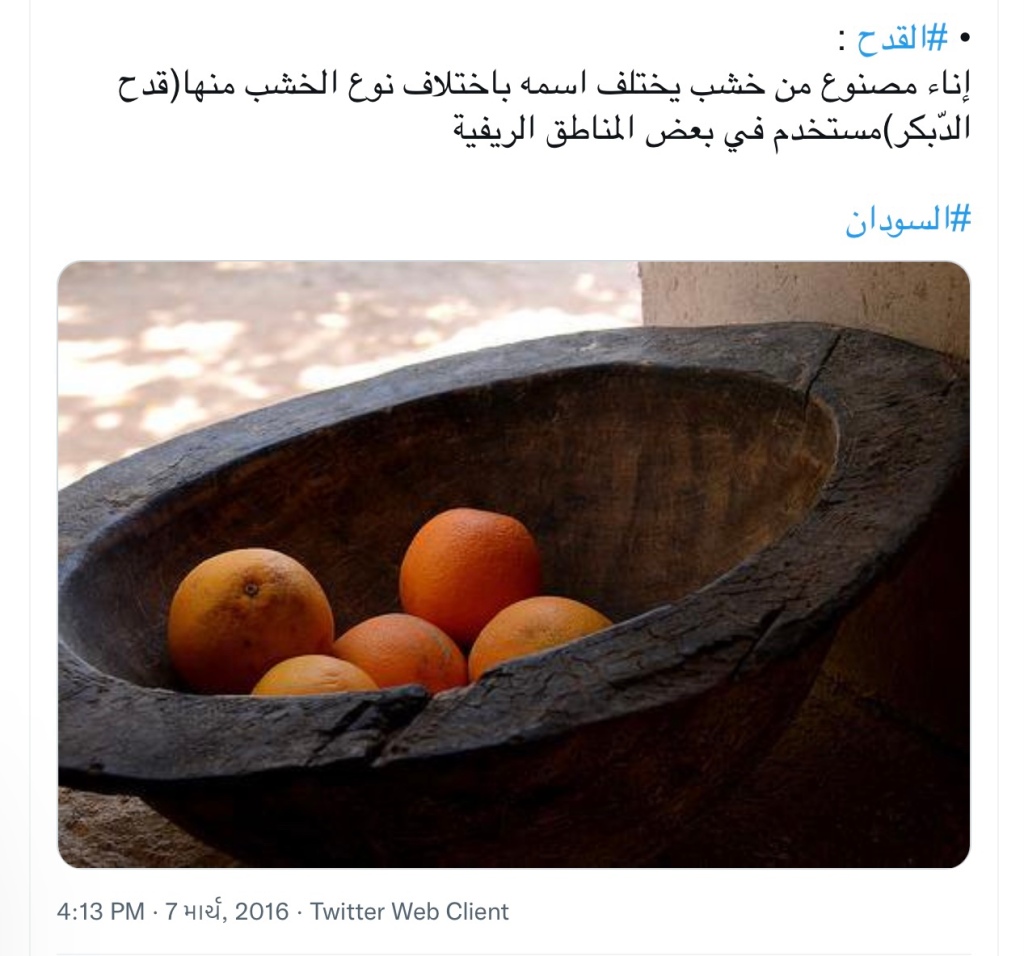Background to This Week’s Text
Below, members of the public interviewed by TV Sudania on their knowledge of this well known, traditional vessel which has positive cultural associations for many Sudanese. Illustrations are provided at the end of this post.

Approaches to the Text
If you haven’t heard of the vessel discussed, why not listen and make notes on how and when it’s used in this three-minute, lower intermediate level report. Try to imagine what the vessel looks like – an example is shown towards the very end of the clip. I have provided more images and cultural background at the end of this post, as well as two Sudanese proverbs featuring this item, but try the listening text first!
You can learn more in http://womensliteracysudan.blog/2022/10/23/al-gadah/
If you prefer, choose three of the interviewees pictured above, and make notes on their comments. Who knew the most about the vessel?
If you would like specific areas to focus on as you listen, consider the following questions:
What’s the subject matter of this series of brief TV reports? What kind of people typically use this vessel and on what occasions? Which foods are mentioned by interviewees? What custom is referred to, using the same term for the vessel? How widespread is its use nowadays? One of the interviewees mentions a famous pre-Islamic personage – who is he and why is he mentioned? What positive associations are attached to the vessel?
Lexical Focus
How many words so you know for container or recipient in Arabic and which are used in this clip? And for materials used to make them? What words do you predict will be used for “diameter”, “curved” and “perforated” ? How many words for types of Sudanese bread can you remember? And what Sudanese version of a standard Arabic term will be used for “helpfulness”?
Watch the Report Here:
Transcript and Explanatory Notes
Below, a gadaH, Sudan Ethnographic Museum, Khartoum.




- 1 survey / exploration, also questionnaire
- 2 The speaker explains that for him the gadaH is used for carrying things such as mortar; al-muuna, by builders; mabaanii, as well for holding food.
- 3 vessel, recipient; maa`
uun; used for carrying food such as kisra andasiida. They are made of wood or iron, but aluminum versions can also be found. The term is also used to refer to the custom … - 4 where people attending special occasions and family gatherings undertake their duty to contribute by bringing / funding what they can of items needed. Their contribution is “recorded in the daftar”, plural dafaatir; literally, notebook, register
- 5 I know what shape it is but I don’t know maDmuun; literally; content / meaning
- 6 another word for container / recipient; inaa’
- 7 Talas; enamel
- 8 `
uud;a piece of wood, stick, plural;eedaan, a`waad - 9 baTaana; to be updated
- 10 ..made from wood from branches; furuu` of large trees
- 11 mugawwas; curved
- 12 Tawa; frying pan, casserole, saucepan, beeD bi-TTawwa; fried eggs
- 13 khalaawii; plural of khalwa; Quran school for young children
- 14 `umda; mayor
- 15 see note at the end of this transcript; a Jaahiliyya (pre-Islamic era) tribesman, renowned for his generosity. See More Generous than Hatim
- 16 kharas; concrete / building concrete
- 17 iron rings
- 18 makhruum; literally perforated, with small holes / also drilled and leaky
- 19 al-qaTar; diameter;
- 20 plural of gadaH; gadaaHa
- 21 (these days the gadaH has all but disappeared; ikhtafat, as people have started eating
- 22 raghiif, plural, arghifa; small loaves of bread (instead of kisra)
- 23 yu`
usuu(`aasa) al-kisra; the verb used for “making kisra” - 24 (carried by people with) muscles; `aDalaat – (you needed to be strong to bear the weight)
- 25 muruwwa; a very useful Sudanese expression meaning helpfulness; `ind-o muruwwa; he helps a lot of people
- 26 nice manners and high morals
- 27 TawaaHiin bi-murHaaka; plural of TaaHuuna, mill and maraaHiik, grindstone / millstone; the speaker explains that in the past those who had children attending Quran school or would bring bread to the schools in large quantities used the gadaH

Proverbs featuring the gadaH.
My thanks to Muna Zaki for these.

More Examples of the GadaH and a Poem
Below, The wooden gadaH containing asiida, cradled in the traditional mandola basket.

Below, a description of the gadaH from Sudan Notes and Records, 1924.

Another example of the gadaH bowl below:

And a poem from Sand in My Eyes; Enikö Nagy, p 177
“The gadah is a traditional wooden bowl used for meals of the extended family and is a symbol of a strong and generous male personality.” (Sand in My Eyes, p177)

I am the wooden gadaH bowl crowded by many / I am the mahlab spice that blesses the head / I am the acacia tree that needs a sharpened axe / I am the rot that can ruin the strongest foundation
And from My grandmother’s coffee rituals (Part 2), from the blog 500 Words

